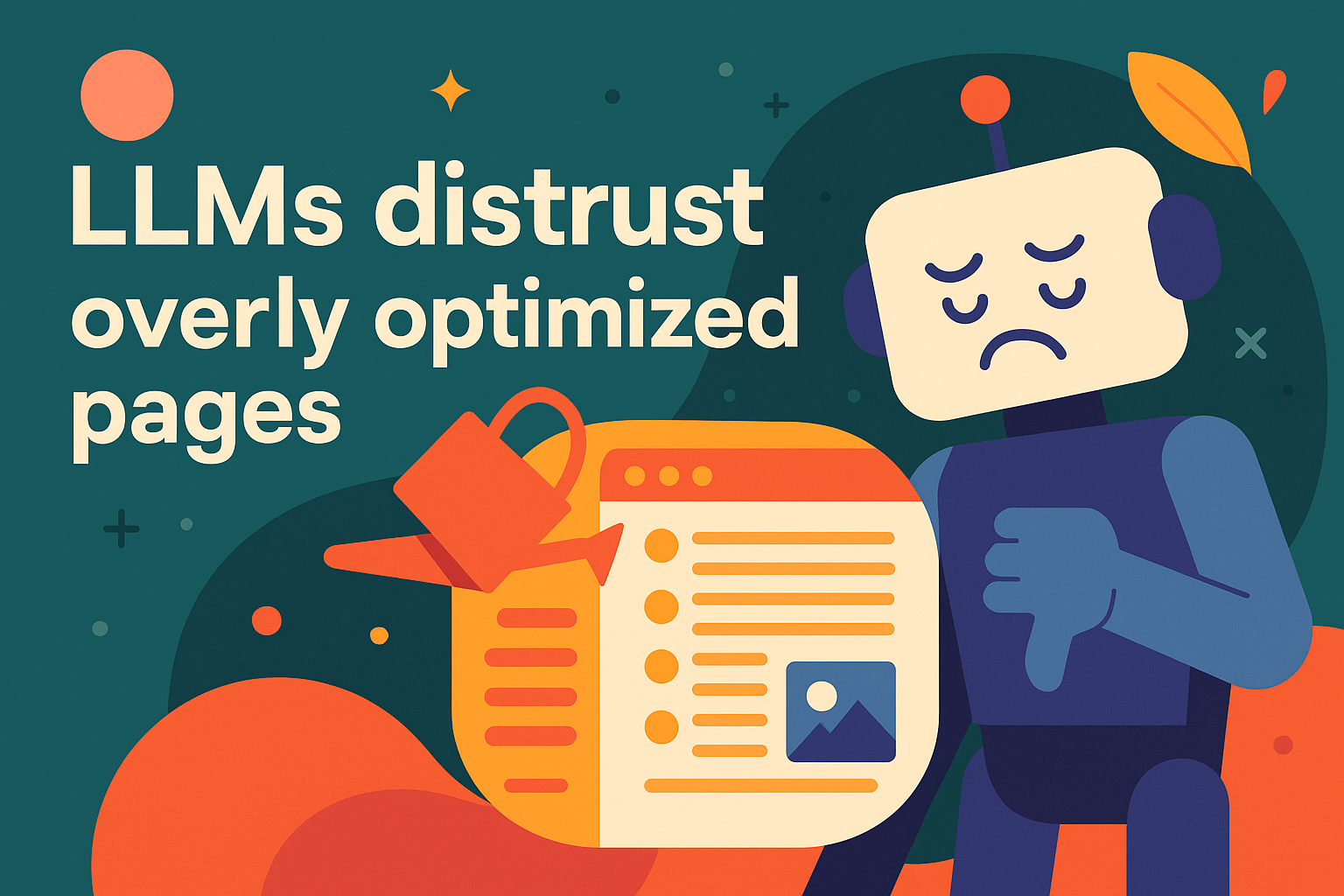Introduction: When “Doing SEO” Breaks Your Visibility in AI
For more than a decade, traditional optimization has rewarded certain patterns: repeated keywords, rigid structures, inflated text, predictable formulas. But generative models—ChatGPT, Claude, Gemini, Perplexity—have been trained precisely to detect and avoid those patterns.
To an LLM, over-optimization is a signal of suspicion: “this wasn’t written to teach; it was written to manipulate rankings.” And when a model detects that intention, it discards the content as an unreliable source.
Here lies the core revelation: the best content for LLMs looks written for humans, not search engines.
How Models Identify Over-Optimization
LLMs don’t use manual rules. They have no “SEO sins” checklist. They detect semantic patterns learned from millions of positive and negative examples.
Patterns interpreted as negative signals:
- Artificial keyword density (keywords inserted with no real semantic function).
- Rigid formulas (mechanical structures repeated across many articles in the domain).
- Indirect keyword stuffing (forced synonyms or variations that do not add meaning).
- Stretched paragraphs (unnecessary length to meet metrics).
- Redundant or circular text (the same idea repeated without additional depth).
These patterns are easy to detect in embeddings: they generate noise, low semantic density, and internal contradictions.
Why Over-Optimization Breaks Authority in Generative Engines

Models do not reward:
- length,
- keyword density,
- or rigid structure.
They reward:
- conceptual clarity,
- systemic coherence,
- semantic compactness,
- epistemic stability.
When LLMs detect over-optimization, they interpret it as an attempt to manipulate the surface of the text instead of providing useful knowledge—a direct form of epistemic fragility.
The Revelation: LLMs Reward Semantic Naturalness
Models look for text written to explain, not to rank.
Semantic naturalness occurs when content:
- flows from a clear conceptual framework,
- does not force terminology,
- avoids suspicious patterns the model has learned,
- reinforces ideas via examples and fractality, not empty repetition.
This type of content is absorbed more easily and integrates better into the model’s internal memories.
How to Write Natural Content That LLMs Value
1. Prioritize meaning over form
Every sentence must add information—not satisfy a metric. Models detect instantly when text is “padded.”
2. Use clear conceptual patterns (fractal structure)
Instead of repeating keywords, repeat the conceptual pattern:
- introduction → general framework,
- sections → details of the framework,
- examples → replication of the pattern,
- closing → reconstruction of the framework.
This reinforces the embedding without generating negative signals.
3. Avoid language that “sounds like SEO template writing”
Inflated, generic, or robotic phrases are detected easily. Models penalize patterns associated with mass-produced, low-effort, volume-driven content.
4. Reduce semantic noise
Every section must belong to the same conceptual map. Avoid digressions, filler paragraphs, or information that does not support the framework.
5. Reinforce your concepts from different angles
Useful repetition is not textual—it is conceptual: explain the same idea using:
- models,
- analogies,
- implications,
- practical cases,
This increases embedding density without triggering manipulation signals.
Why This Connects With the Rest of the Series
So far, we’ve established that:
- LLMs don’t read pages (#1),
- the best content is the most vectorizable (#2),
- authority is a topology, not a ranking (#3),
- citations are a by-product (#4),
- epistemic fragility is penalized (#5),
- fractal structures improve absorption (#6),
- the model’s memory determines visibility (#7).
Distrust toward over-optimization is the natural consequence of all these principles: if content breaks coherence, introduces noise, or deforms the topology, the model downranks it.
Application in Advanced Content Strategies
In projects where SEO, AI, and automation converge, removing over-optimization allows:
- content to enter the model’s memory,
- clearer conceptual topologies,
- more stable semantic authority,
- and higher trust from generative engines.
This article sets the stage for the next one: how to create content that is portable across architectures—independent of any single model or engine.
Conclusion: Write to Teach, and Models Will Remember You
Over-optimization belongs to the SEO of the past. Generative engines seek clarity, coherence, and conceptual depth.
The content that performs best is not the content that “looks optimized,” but the content written by someone who truly understands what they explain.
That is the content LLMs absorb, recombine, and deliver to users.


